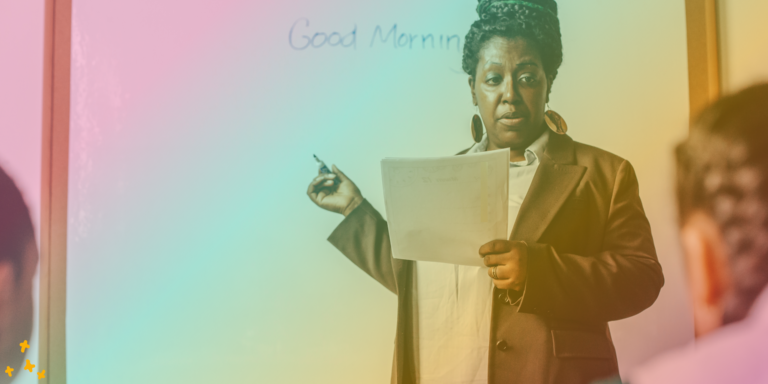Is Your Talent Development Program Supporting Employee Wellness?
Posted by Trakstar • March 1, 2023 • 8 min read
When HR leaders form talent development plans, sometimes there isn’t a focus on employee wellness. This isn’t because HR leaders don’t see the importance of employee well-being. Instead, it is because they are under intense pressure to produce the best employee outcomes and metrics for their managers. So how can HR center employee wellness while promoting personal and professional development?
It’s a fine line to walk, but there are ways you can have the best of both worlds: employees who are happy and healthy while still pushing them to be their best within your talent management program.
Start Developing Employee Wellness Programs
If your organization doesn’t have an employee wellness program, it’s time to start thinking about developing one. HR leaders may need some guidance around developing this type of benefit, but countless studies show how vital employee wellness is to overall company performance.
It’s important to note that employee wellness programs are more than healthcare benefits and vacation days. Many employee wellness programs today feature care for mental, physical, emotional, and even financial health.
Burnout rates are still extremely high, and they may not go down. This goes hand-in-hand with unprecedented job openings, for good reason. Employees get burnout at one job and then move on to another. It’s easier to treat burnout than to treat employee churn – and developing employee wellness programs might be the best way to do so. Wellness is equated to better performance, more creativity, and overall happiness.
Regularly Review The Components Of Employee Wellness Programs
A company wellness policy should aim to promote the physical, mental, and emotional health and well-being of employees. Here are some elements that could be included:
- Health and safety measures: The policy should outline steps to ensure that the workplace is safe and healthy, including provisions for regular cleaning, maintaining air quality, and promoting healthy hygiene practices.
- Healthy eating and physical activity: The policy should encourage healthy eating and physical activity, including guidelines for healthy eating options and provisions for workplace fitness programs or gym memberships.
- Mental health support: The policy should provide resources and support for mental health, such as access to counseling services, mental health days, and flexible work arrangements.
- Smoking and substance abuse policies: The policy should outline the company’s stance on smoking and substance abuse and provide resources and support for employees who want to quit.
- Work-life balance: The policy should encourage work-life balance, including flexible working arrangements and support for employees with caregiving responsibilities.
- Health and wellness education: The policy should provide education and resources on health and wellness topics such as stress management, nutrition, and exercise.
- Rewards and incentives: The policy should offer incentives to encourage employees to engage in healthy behaviors, such as rewards for participating in wellness programs or achieving health goals.
Overall, a company wellness policy should be comprehensive and designed to support the overall well-being of employees, which can improve productivity, reduce absenteeism, and create a healthier and happier workplace culture.
Collect Employee Wellness Ideas
Collecting ideas from employees can be a great way to improve engagement, boost creativity, and gain new perspectives on various aspects of your business. There are a few different ways you can do this.
We suggest running surveys! You can use engagement surveys through a solution like Trakstar Perform to ask questions and gather information about a specific topic. If you want honest feedback, it’s best to make these anonymous.
If you have a smaller workforce, use a meeting to hold a brainstorming session! This will allow for deeper conversations around these ideas with those with them. You want to ensure you set the standard that no one will be judged for their thoughts.
If you’re working in person, you can use suggestion boxes to gather feedback – but remember any hybrid or remote workers you have.
Remember to listen actively to your employees and acknowledge their ideas. Creating a culture that values and encourages employee input can foster a more engaged and productive workforce.
Encourage Employee Check-Ins
Are your managers leading employee check-ins?
An employee check-in is a process where an employer or manager meets with their employees to discuss their work, progress, and any issues that need to be addressed. The check-in can be informal or formal and occur regularly, such as weekly, monthly, or quarterly, depending on company policies.
During an employee check-in, the employer or manager may ask the employee about their workload, their challenges, and any support they need. The employer may also provide feedback on the employee’s performance, offer suggestions for improvement, and discuss career goals and development opportunities. But, there also needs to be a discussion around wellness. Is your employee happy? Fulfilled? Is everything okay outside of work? It’s challenging to ask some tough questions, but it’s important to do it anyway.
Employee check-ins are essential for maintaining open communication between employees and their managers, identifying and addressing issues early on, and creating a positive work environment. They can also help build trust and foster a sense of collaboration and teamwork among employees so that employees can go to the people they trust when there is a need to focus on wellness.
Read more about employee check-ins here.
Run Employee Wellness Surveys
Too often, employers only use employee surveys to ask questions about work-related items. Use your employee surveys to ask about wellness programs and what they’d like to see. Get a pulse of your employees and ask whether they are happy or feeling burnout. Understanding your employees is part of the battle.
Employee wellness surveys are questionnaires designed to gather information about employees’ physical, emotional, and mental health in the workplace. Employers use these surveys to assess the overall health and well-being of their workforce, identify potential health risks or issues, and develop programs to support employee health and wellness.
Employee wellness surveys can cover various topics, such as nutrition, exercise, stress management, mental health, and workplace safety. The questions may ask about employees’ current health status, their lifestyle habits, and their satisfaction with the support and resources provided by the company.
The data collected from employee wellness surveys can help employers make informed decisions about workplace wellness programs and initiatives. For example, if the survey indicates that employees are experiencing high levels of stress, the employer may decide to offer stress management workshops or counseling services. Similarly, if the survey reveals that employees are struggling with maintaining healthy eating habits, the employer may provide healthy food options.
Overall, employee wellness surveys are a useful tool for promoting a healthy work environment and supporting the well-being of employees.
Show Appreciation
Show appreciation for your employees! Engaged, happy employees are more likely to deliver fantastic results and avoid quiet quitting and burnout. We have a whole blog here if you are looking for ways to show appreciation.
But you need to know that you can’t only show appreciation once or twice a year – it must be ongoing. Show appreciation in little ways when you can. It doesn’t have to be everyone all the time either. Showing appreciation when someone does something well is great for their mental health.
A little truly goes a long way.
Promote Work-Life Balance
That employee working 60 hours a week probably delivers great results, but there needs to be a work-life balance. Be sure to emphasize mental and physical health to your employees. Part of leadership is knowing what’s best for people, even if it means taking a step back or work less. Of course, everyone is expected to work the timelines stated in their contracts, but don’t push people to work outside of their normal hours. Try to fill skill gaps where you can, and if someone hasn’t taken a day off in some time, encourage them to do so.
Model Behavior
If you want your employees to take their wellness seriously, you must model that behavior. Encourage your own department and other leaders to take advantage of employee wellness programs. Take breaks, take mental health days, know when enough is enough, and care for yourself. Don’t encourage your team to work overtime or on weekends. Take a lunch break. Invite other employees to do the same. If your company is in person, ensure the C-Suite takes advantage of mid-day treats.
Your employees might feel uncomfortable engaging with events or special treats if they don’t see leaders doing the same thing. In large organizations, an employee health and wellness coordinator can monitor the usage of special employee wellness events, but for companies that don’t have someone in this role, that duty will ultimately fall to human resources.
Employee Wellness Includes A Healthy Talent Management Program
Trakstar Perform is a performance management software designed to help organizations streamline their performance management processes and improve employee performance reviews and more. Here are some reasons why your organization may benefit from using Trakstar Perform:
- Improves communication: Trakstar Perform allows managers and employees to communicate effectively through its real-time feedback feature. This helps in identifying and addressing performance-related issues promptly, leading to improved productivity and engagement.
- Encourages continuous feedback: Trakstar Perform encourages continuous feedback by allowing managers to provide feedback to employees at any time. This helps in identifying areas for improvement and implementing corrective measures in real time.
- Facilitates goal setting: The software helps managers and employees set SMART (Specific, Measurable, Achievable, Relevant, and Time-bound) goals. This helps employees stay focused and motivated to achieve their targets.
- Offers data-driven insights: Trakstar Perform offers analytics and insights on employee performance, which can be used to identify trends, spot areas for improvement, and make informed decisions on talent development and resource allocation.
- Saves time and resources: The software automates many of the administrative tasks associated with performance management, such as tracking progress, scheduling reviews, and documenting feedback. This frees up time and resources that can be better utilized for strategic planning and execution.
Overall, Trakstar Perform can help organizations improve their performance management processes, foster a culture of continuous feedback, and drive employee engagement and productivity.
Don't Miss Out on More Great HR Articles!
Subscribe to get the latest, greatest HR and Talent Development content straight to your inbox.


